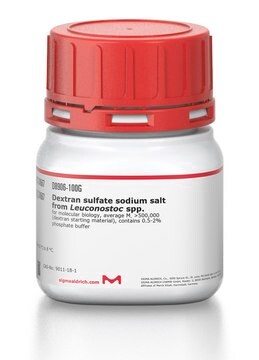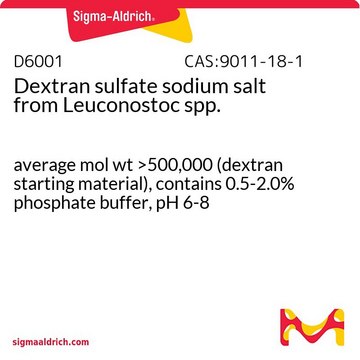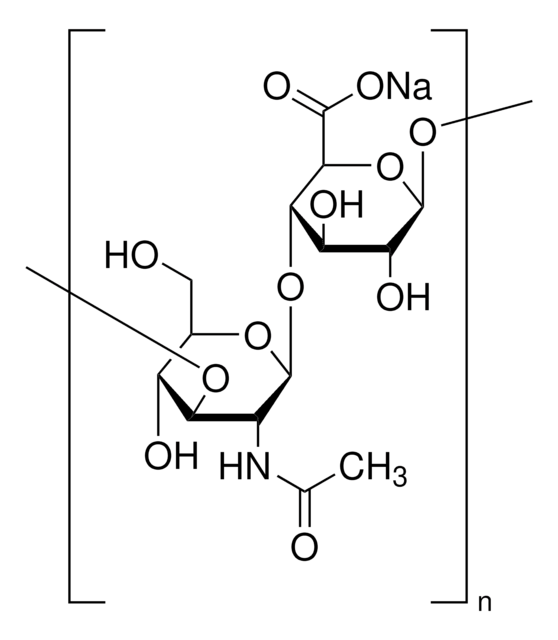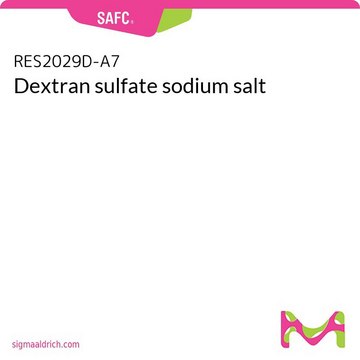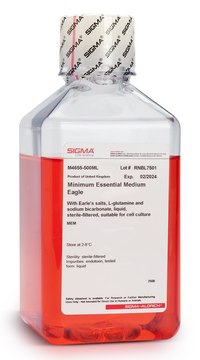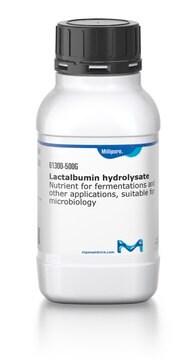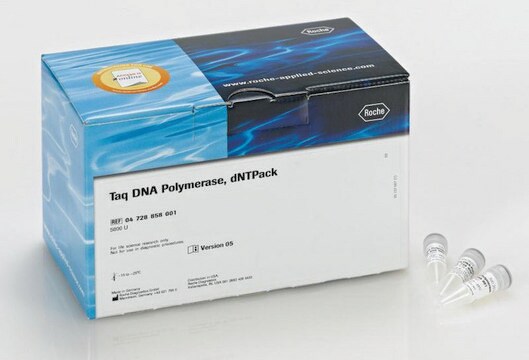G6148
Glasgow Minimum Essential Medium
With L-glutamine, without tryptose phosphate broth and sodium bicarbonate, powder, suitable for cell culture
Sinonimo/i:
BHK medium, GMEM
Autenticatiper visualizzare i prezzi riservati alla tua organizzazione & contrattuali
About This Item
Prodotti consigliati
Livello qualitativo
Stato
powder
tecniche
cell culture | mammalian: suitable
Componenti
glucose: 4.5 g/L
phenol red: 0.0213 g/L
L-glutamine: 0.292 g/L
NaHCO3: no
Condizioni di spedizione
ambient
Temperatura di conservazione
2-8°C
Cerchi prodotti simili? Visita Guida al confronto tra prodotti
Descrizione generale
Glasgow Minimum Essential Medium is suitable for the study of genetic factors affecting cell competence.
Applicazioni
Glasgow Minimum Essential Medium has been used:
- in toxin entry assays
- for 3 H-palmitate labeling
- to culture embryonic stem cells
Quantità
Formulated to contain 12.5 grams of powder per liter of medium.
Ricostituzione
Supplement with 2.75 g/L sodium bicarbonate and Tryptose phosphate broth solution (T 8159) at 100 ml/L of medium.
Comunemente ordinati con questo prodotto
N° Catalogo
Descrizione
Determinazione del prezzo
Supplemento
N° Catalogo
Descrizione
Determinazione del prezzo
Avvertenze
Danger
Indicazioni di pericolo
Consigli di prudenza
Classi di pericolo
Eye Dam. 1
Codice della classe di stoccaggio
11 - Combustible Solids
Classe di pericolosità dell'acqua (WGK)
WGK 1
Punto d’infiammabilità (°F)
Not applicable
Punto d’infiammabilità (°C)
Not applicable
Dispositivi di protezione individuale
dust mask type N95 (US), Eyeshields, Gloves
Scegli una delle versioni più recenti:
Possiedi già questo prodotto?
I documenti relativi ai prodotti acquistati recentemente sono disponibili nell’Archivio dei documenti.
I clienti hanno visto anche
Keiichi Ito et al.
Genes & development, 35(9-10), 729-748 (2021-04-24)
The MED1 subunit has been shown to mediate ligand-dependent binding of the Mediator coactivator complex to multiple nuclear receptors, including the adipogenic PPARγ, and to play an essential role in ectopic PPARγ-induced adipogenesis of mouse embryonic fibroblasts. However, the precise
Tatsushi Miyazaki et al.
PloS one, 8(8), e71645-e71645 (2013-08-14)
Tcl1 is highly expressed in embryonic stem (ES) cells, but its expression rapidly decreases following differentiation. To assess Tcl1's roles in ES cells, we generated Tcl1-deficient and -overexpressing mouse ES cell lines. We found that Tcl1 was neither essential nor
Naiara Clemente Tavares et al.
Frontiers in microbiology, 11, 963-963 (2020-07-01)
Schistosomiasis is a neglected tropical disease (NTD) caused by helminthes from the Schistosoma genus. This NTD can cause systemic symptoms induced by the deposition of parasite eggs in the host liver, promoting severe complications. Functional studies to increase knowledge about
Wander de Jesus Jeremias et al.
PloS one, 12(6), e0178829-e0178829 (2017-06-18)
Once inside a vertebrate host after infection, individual schistosomula of the parasite Schistosoma mansoni find a new and complex environment, which requires quick adjustments for survival, such as those that allow it to avoid the innate immune response of the
Edward C Hsiao et al.
PloS one, 3(7), e2532-e2532 (2008-07-04)
Fluorescent reporters are useful for assaying gene expression in living cells and for identifying and isolating pure cell populations from heterogeneous cultures, including embryonic stem (ES) cells. Multiple fluorophores and genetic selection markers exist; however, a system for creating reporter
Il team dei nostri ricercatori vanta grande esperienza in tutte le aree della ricerca quali Life Science, scienza dei materiali, sintesi chimica, cromatografia, discipline analitiche, ecc..
Contatta l'Assistenza Tecnica.

